What happens when one of the most important contemporary artists designs a... labyrinth? To know the answer, one needs to go to Fattoria di Celle di Santomato, just outside Pistoia, the place where Giuliano Gori arranged his important collection of environmental art, the Gori Collection: this is where Robert Morris’ Labyrinth, one of the collection’s most famous works, is located. Gori had begun collecting as early as the 1950s, but the Fattoria di Celle, the place where his collection would find its final home, opened to the public on June 12, 1982: the Labyrinth was already part of the itinerary.
Made precisely in 1982, the work by Robert Morris (Kansas City, 1931 - Kingston, 2018), one of the pioneers, theorists and leading representatives of minimalism, stands as one of the most fascinating and symbolic installations in the Gori Collection, linking the visitor’s physical experience with a profound existential meaning.
The labyrinth, which Morris created after spending several months in Tuscany precisely with the intention of fine-tuning his work (even the spot where the structure is located, a gently sloping meadow, was chosen by the artist), is constructed using local materials such as white marble and serpentinemarble , combined with concrete, with a shape that resembles an equilateral triangle with a side length of 15 meters and a height of 2.1 meters. Externally, it is distinguished by white and green stripes reminiscent of the style of Tuscan Romanesque churches. This stylistic choice is not accidental, but aims to connect the work to the historical architecture of the area, creating a visual dialogue between past and present. Morris’s labyrinth, like many other works in the Gori Collection, is in fact strongly linked to the landscape that hosts it. Fattoria di Celle has always sought to provide an ideal context for this kind of in situ work, where art becomes an integral part of the natural landscape and continuously dialogues with the territory. The work, with its references to local architecture and the surrounding nature, thus fits harmoniously into the park, creating a relationship between the artificial and the natural, the past and the present, human interiority and the outside world.
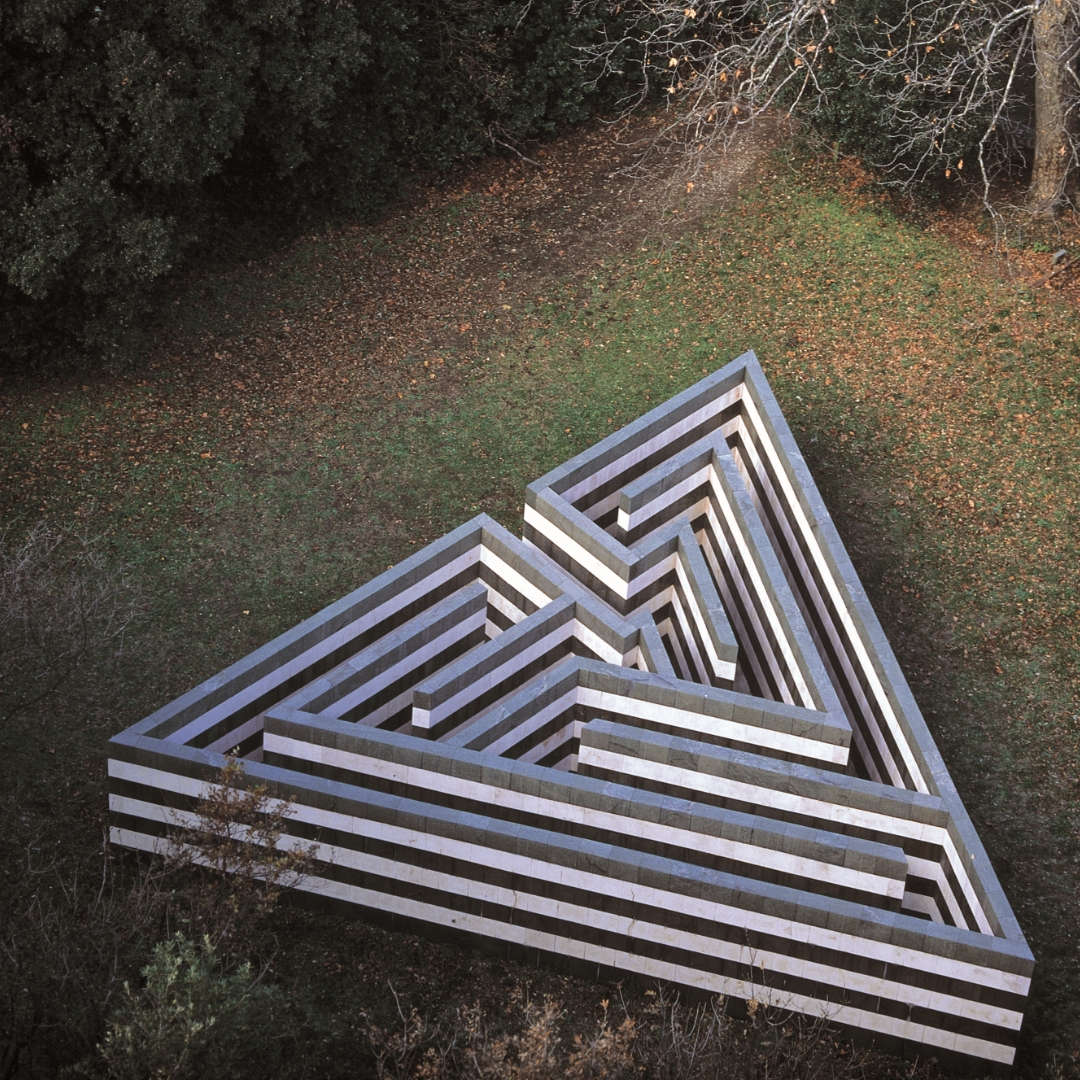
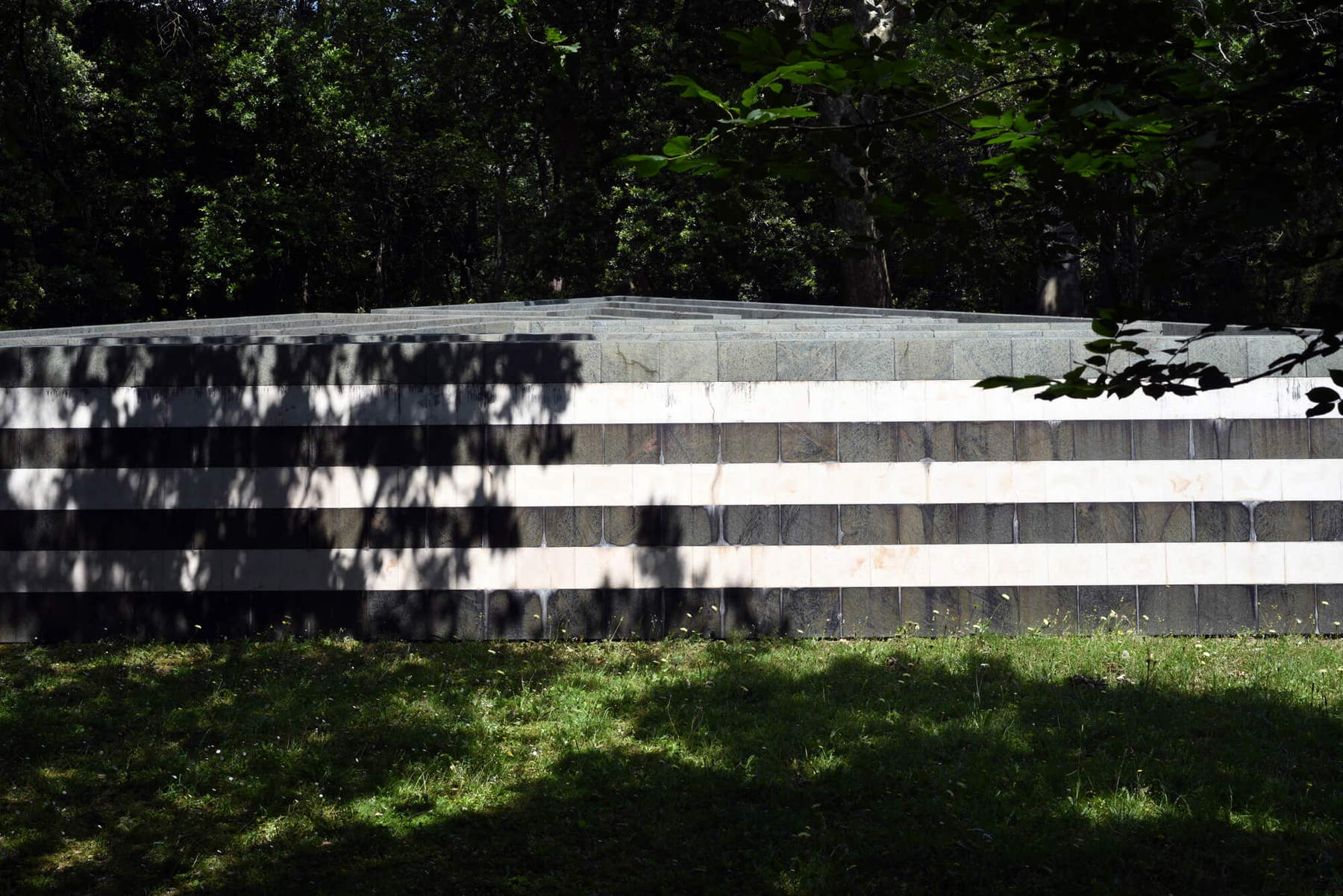
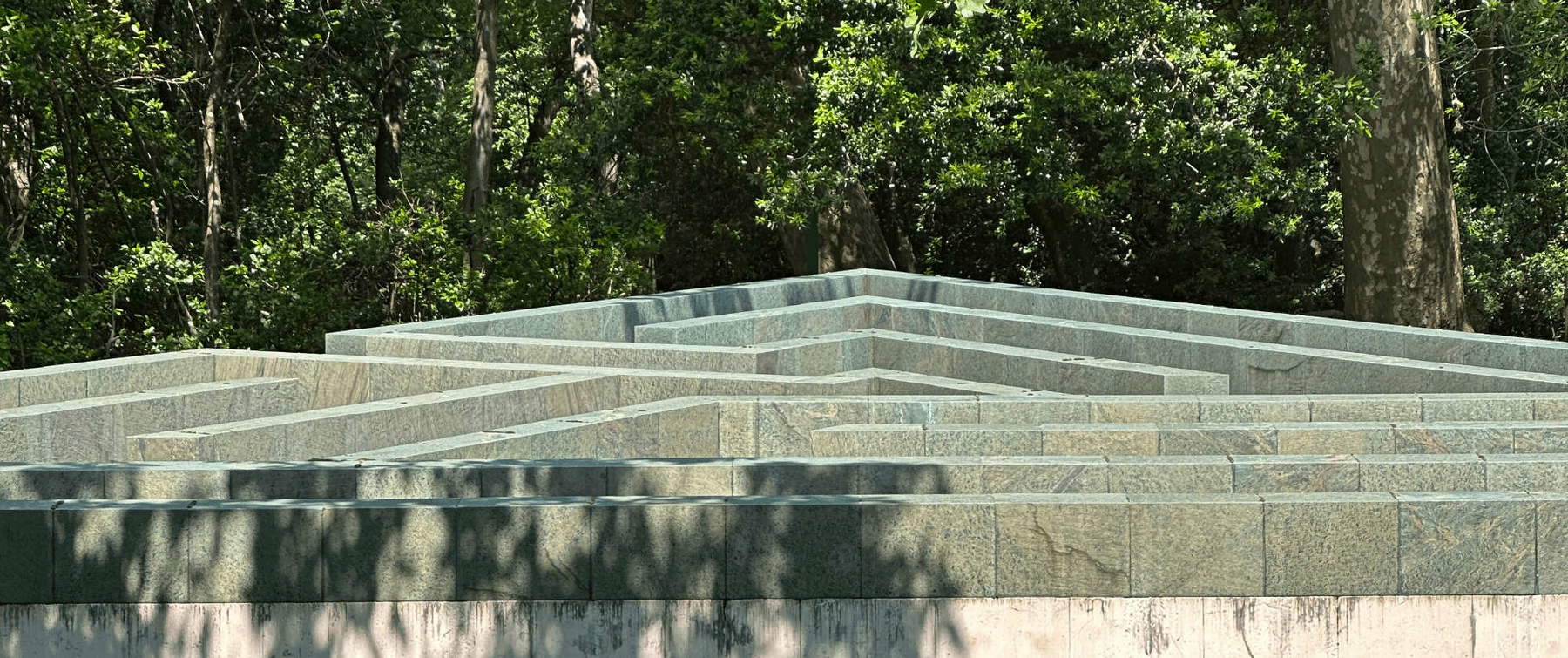
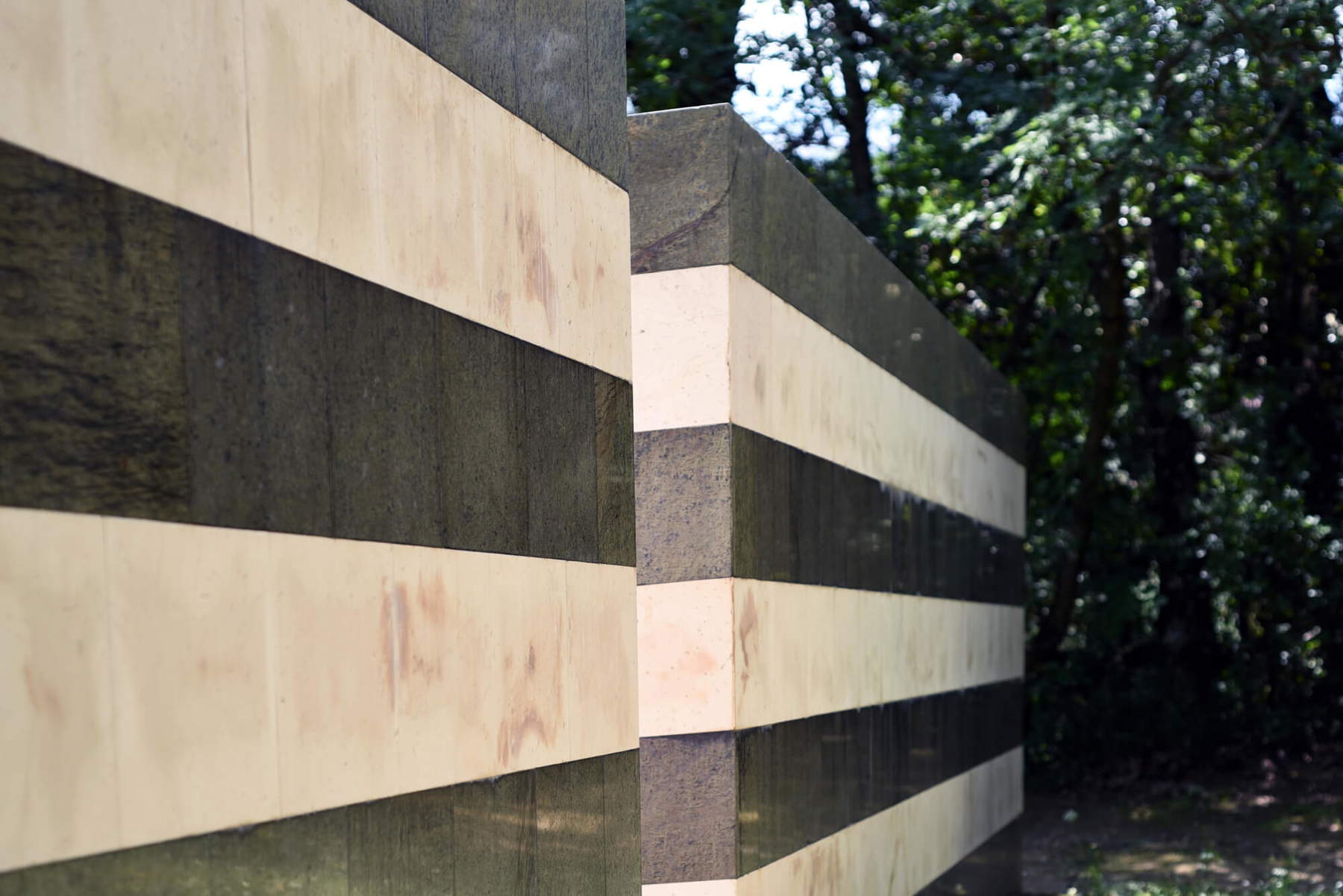
Structurally, the labyrinth does not have the typical features of classical labyrinths, such as dead ends or alternate routes. Instead, Morris designed a linear, variant-free path that winds obliquely, reflecting the concept of a journey that, despite personal choices, always leads to one final destination. The only variation from classical labyrinths is the presence of ascents and descents: this is why Morris had chosen sloping terrain for his work. These, too, are symbolic of what one encounters in life. A structure, then, meant to be highly evocative: the journey through the labyrinth represents a metaphor for the path of life, with moments of easy descent, followed by difficulties (symbolized by the climbs and sharp edges), but with the knowledge that in the end one always retraces one’s steps.
Entry into the labyrinth is through a short corridor that is abruptly interrupted, breaking the visitor’s orientation and immediately throwing him or her into a state of physical and mental disorientation. Walking inside it does not offer the possibility of seeing the entire structure, but only a series of walls and corners that gradually unravel. This is the heart of Morris’s work: the experience of the work is not only visual, but involves the visitor’s entire body and senses, creating a kind of phenomenological immersion in the space. The viewer is forced to experience the labyrinth from the inside, without the possibility of gaining an overall view from the outside (only the striped walls are seen from the outside), metaphorically representing the idea that the meaning of life is understood only through direct experience.
However, there is also another aspect related to this relationship between horizontality and verticality. Morris, in 1975, had written an article titled Aligned with Nazca, published in Artforum: in the article, the artist, reflecting on the Peruvian geoglyphs of Nazca, focused on the fact that these structures could only be understood when observed from above. And the same for labyrinths: “A labyrinth is understandable only when viewed from above, in plan, when it has been reduced to latitude and we are outside its spatial spiral. But such reductions are as foreign to spatial experience as photographs of ourselves are to our experience of ourselves.” This antinomy between horizontal and vertical becomes the precise object of investigation in the Labyrinth of the Gori Collection. “When observed from the ’horizontal’level of the ground, such a work,” wrote scholar Alessandra Acocella, “shows itself as a quadrangular body bordered by two-meter-high walls with emphasized chromatic alternation of white and green marble horizontal bands, with a stratigraphic and continuous course. This progressive alternation of light and dark strings [...] heightens, exasperating it, the feeling of disorientation felt by the one who incurs inside the narrow and obligatory corridor articulated in slope and characterized by continuous turns in the form of acute angles. The non-horizontality of the floor plane, which alternates between uphill and downhill sections, perceptually deforms the continuous development of the dichromate bands that, from the condition of perfect legibility on the outside of the architecture, become dynamic within it, creating an illusionistic play of distorted perspectives. Coming out of the labyrinth, a different reading of the work is offered than that proposed by the phenomenological ’inside’ experience influenced and conditioned by the disorienting path. A raised platform, placed nearby and hidden from view by the trees, allows us to experience another, ’elevated’ vision, which enables us to understand how the volumetric form of the labyrinth does not originate from an equilateral triangle. It also allows us to notice how the point of origin and the final goal of the labyrinthine device [...] are adjacent to each other and divided only by a wall. The strong sense of bewilderment provoked by this double and unexpected revelation is echoed by the artist’s words, placed at the conclusion of the brief and enigmatic textual accompaniment to Celle’s labyrinth: ’The feelings drawn in green and white that appear from above, do they show a way out? And an exit from where?’”
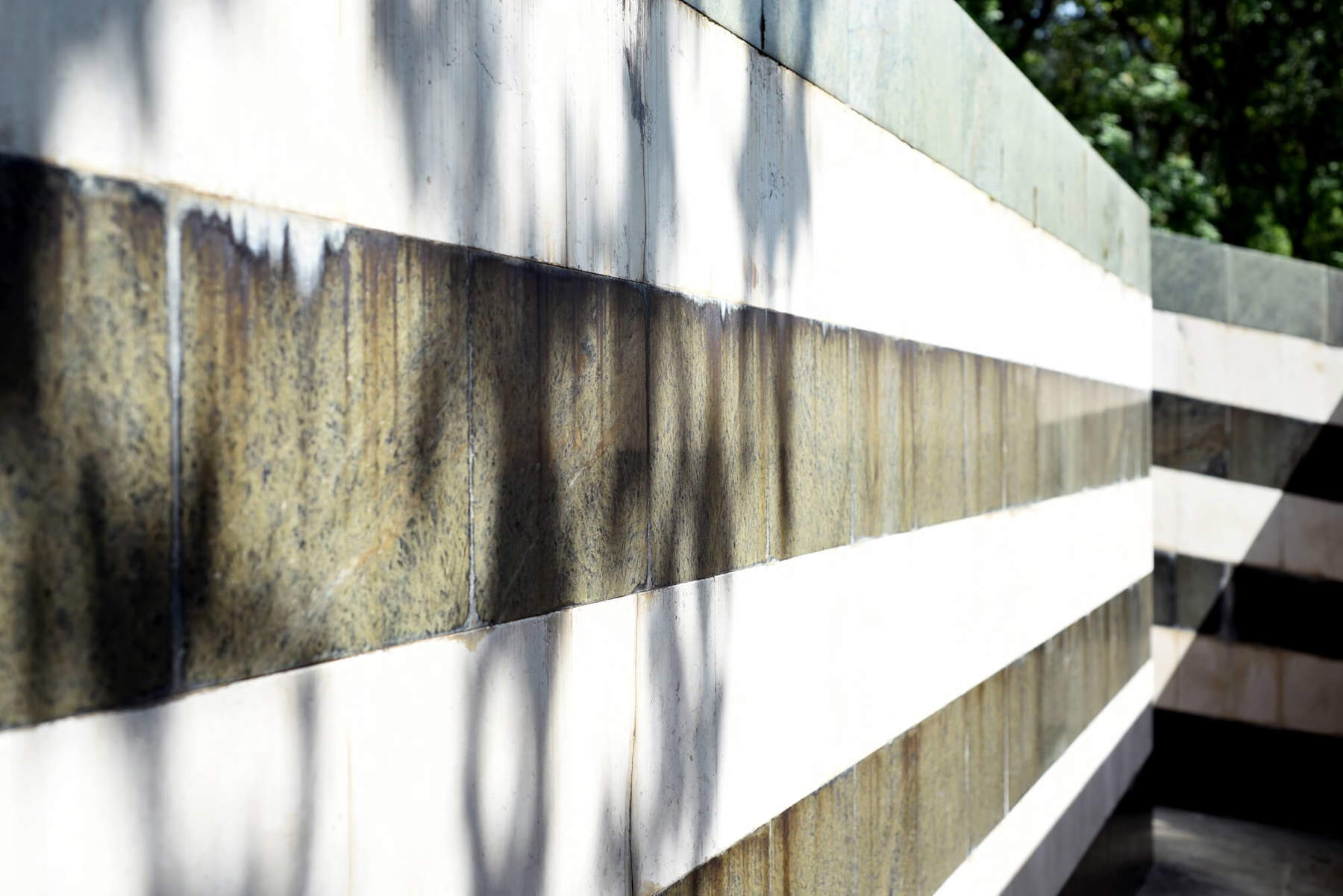
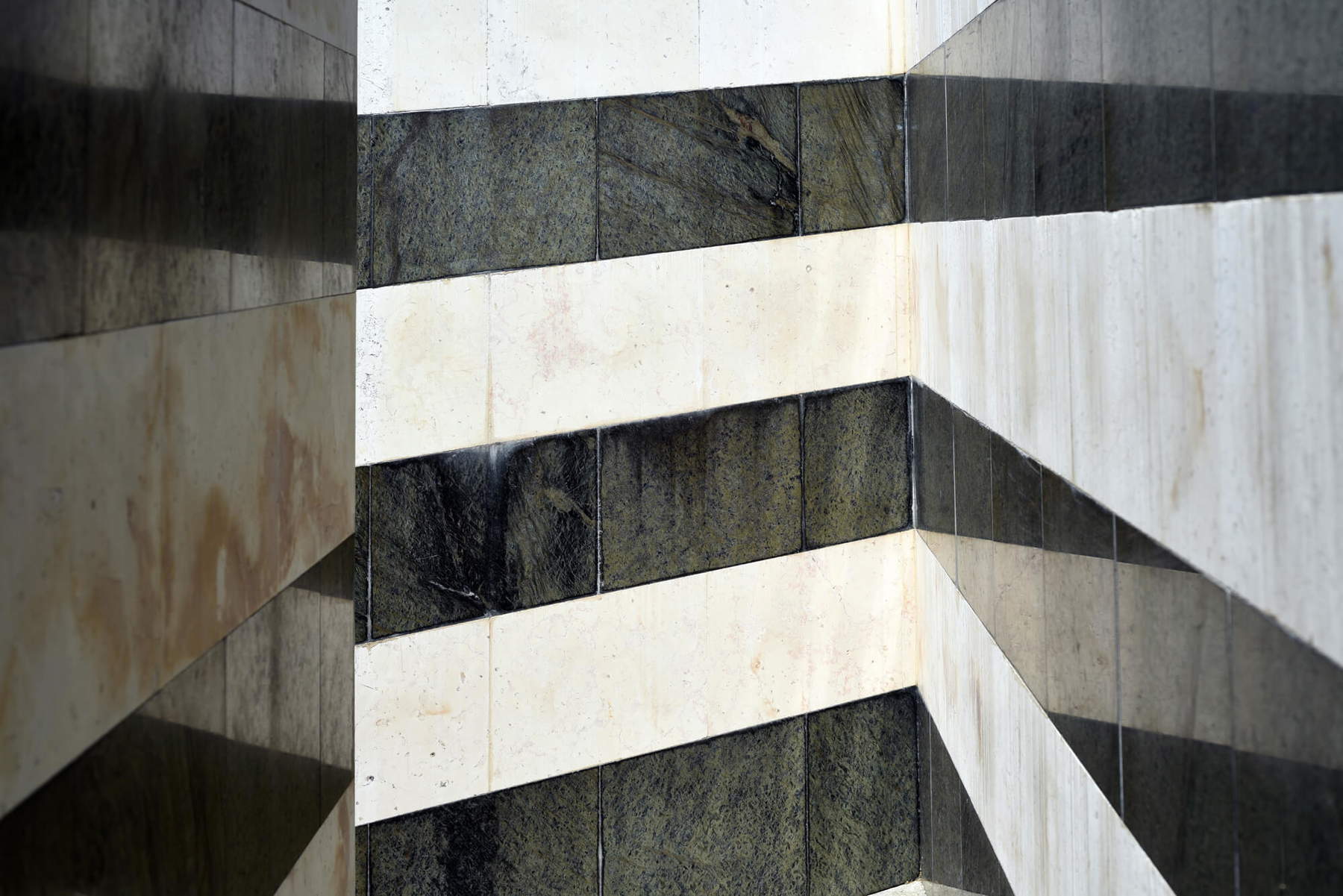

Robert Morris’s Labyrinth can be read as a reflection on the existential journey (“The shape of the labyrinth,” the artist wrote in 1975, “is perhaps a metaphor for the search for the self, for it requires a continual wandering, a continual relinquishing of knowledge of where one is”). Its linearity and lack of alternatives symbolize the condition of the human being, who moves through a life full of difficulties and uncertainties (the sharp edges and climbs), but who, in the end, is destined for a single path, devoid of variations. This journey represents both a physical exploration of the world and an inner journey in search of self. The fact that one has to go back along the same path reflects the idea that life, after all, is a closed circle, and that each lived experience inevitably influences the next.
The theme of the labyrinth is central to the artistic output of Robert Morris, who has explored this architectural form in several works throughout his career. It is a quest that has always fascinated him, from the time he created the work Passageways in his studio in 1961: it was not a labyrinth proper, but it was a small system of corridors and passages that could resemble a labyrinthine structure. Labyrinths proper would still come in his art, which abounds with mazes, think of the 1974 Philadelphia Labyrinth, the 1999 Pontevedra Labyrinth, or the 2013 Glass Labyrinth . Then there are in his production drawings known as Labyrinths, true dedications on paper, not meant for actual three-dimensional translation, but nonetheless important within his artistic journey and practice. Morris was fascinated by the ambiguity of the labyrinth, a structure that can seem oppressive and deceptive, but at the same time offers a kind of seduction and curiosity. This concept is also found in his installation at Celle Farm, where the labyrinth becomes a deceptive structure that disorients and forces the visitor into a direct and personal exploration of the space.
Through the use of the labyrinth as a symbol of life, Morris invites visitors to confront the difficulties, uncertainties and choices of their own existence, while at the same time offering visitors to Fattoria di Celle a space for meditation and reflection immersed in Tuscan nature. And the Gori Collection, thanks to works like this, confirms itself as an exceptional place for contemporary art, where the interaction between art and landscape creates unique and engaging experiences.
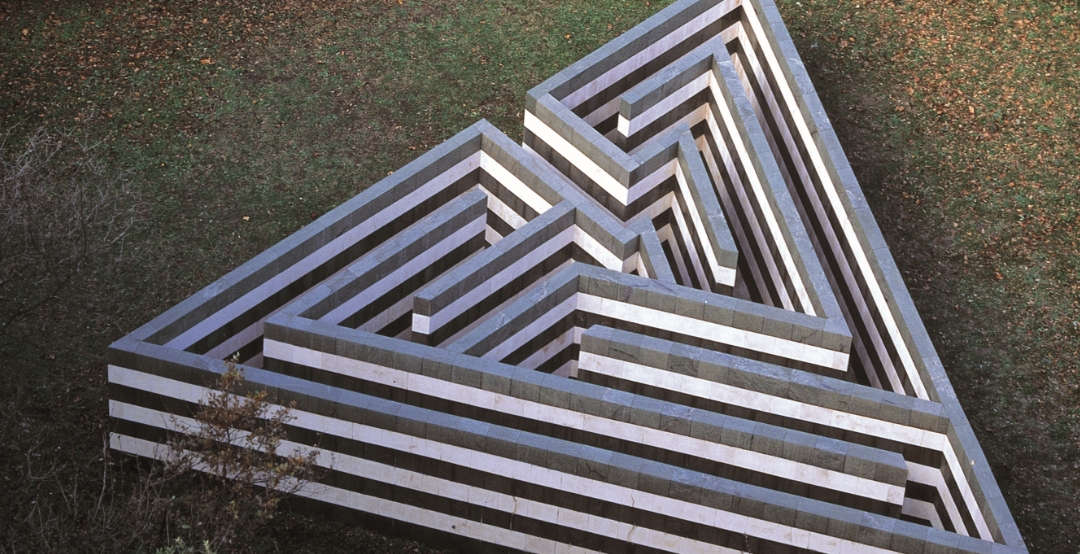 |
| Robert Morris' Labyrinth at Celle Farm: a journey between art and life? |
Warning: the translation into English of the original Italian article was created using automatic tools. We undertake to review all articles, but we do not guarantee the total absence of inaccuracies in the translation due to the program. You can find the original by clicking on the ITA button. If you find any mistake,please contact us.